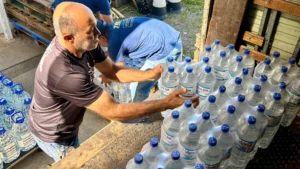Those who pollute the most are not always the ones who suffer the most from the effects of global warming
You negative effects of global warming have been felt more and more frequently, especially in natural disasters such as heavy rains and landslides that hit the south of Bahia It is Petrópolis (RJ) between the end of 2021 and the beginning of 2022.
But some people have been feeling this impact more intensely. The most vulnerable populations, who already face problems such as poverty, food insecurity and precarious housing, are suffering the consequences of climate change much more seriously.
That's why we're hearing more and more about the concept of climate justice, which addresses the problem not only from an environmental point of view, but also from a social, political and economic point of view. Doing climate justice, therefore, means recognizing that different communities will feel the effects of global warming differently and that some countries, regions and even companies have a greater responsibility in tackling this problem — and must assume it.
Climate justice is the search for solutions that not only reduce pollutant emissions to stop global warming, but also to help create a fairer world, where everyone has access to good quality air, food and water, as defined by the Climate Action movement.
Human rights and the climate crisis
According to the report Stop Burning Our Rights, published by Amnesty International, between 1751 and 2014, the United States, the United Kingdom and Germany produced accumulated greenhouse gas (GHG) emissions per capita which are at least six times higher than the global average. Still, the climate crisis disproportionately affects the populations of the poorest countries.
Read also: 4 practices to combat the intensification of the greenhouse effect
Survey data indicate that, from 1990 to 2015, the richest 10% of the world population were responsible for more than half of the accumulated emissions, while the poorest 50% emitted only 7%. Furthermore, the richest 1% layer of the world's population emitted more than twice as much carbon dioxide (CO2) than the poorest half of the world.
At the same time that the poorest population is the least responsible for the warming of the planet, they represent the portion that suffers most from the effects of this. It is in this context, therefore, that the concern with climate justice arises and with looking at the problem as a whole and putting into practice public and private policies that take into account the worsening of social inequalities caused by the environmental crisis.


